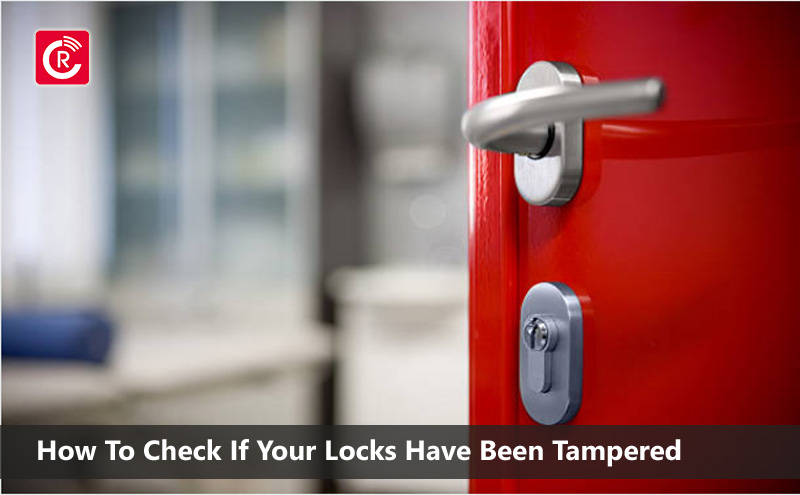
Break-in attempts are not good news for businesses. If you are just back home, you will be concerned about a stranger’s presence in your home and think perhaps he might have stolen your property. Once your locks face tampering, your home is no longer safe or secure, and there is nothing to stop a stalker or burglar or returning. So it is better to look out for possible signs of an invasion.
The first thing you should take notice of is checking the tamper with the lock. Remember that if the break-in was unsuccessful during the first attempt, there is a chance of a second attempt where the burglars will be better prepared. To help you in such a situation in the future, you must know a few signs of a possible break-in.
Here are some points you should look out for:
1. Scratches
Wear and tear are ordinary for locks that undergo frequent usage. However, deep cuts and scrapes near the edges of the lock is a reason for suspicion. For instance, if your deadbolt lock appears to be slightly out-of-place or there are scratches along with the keyhole, then there is a chance of a case of lock picking. The primary purpose of lock picking is to manipulate the lock device’s tumblers to open the door without the original key. They do it by using a wide range of tools. Among them, picks and screwdrivers with sharp points can often press along the edges of the lock.
This pressing can lead to the appearance of shiny metal scratches on its surface. That’s why they may indicate the chances of lock tamper. An excellent solution for problems is to stop using conventional locks and opting to install better smart locks. They do not need a key; therefore, they offer an increased layer of protection.
2. The lock doesn’t Function Properly
If you cannot find any noticeable signs of damage, look about how the key turns. You might find something odd about it. It could be an indicator of lock tamper. Common tactics used by burglars are bumping and snapping, and a faulty key is its symptom.
Bumping means using an improvised key which fits within the target lock. Now to force the tumblers to release, strike with a blunt object.
Snapping is a more straightforward method that uses a hammer in tandem with any tool that can hold the lock’s protruding part. Snapping to get the lock to break, rendering its security useless.
3. Damaged Lock
Brute forcing is a method of breaking-in that leaves visible signs of attempted burglary. Many amateur housebreakers try this option. Their inexperience in snapping or picking will physically damage the lock to get it to turn. It generally involves using a crowbar to damage the lock’s body, drilling through the lock, or kicking the door itself, with the intent to unhinge it.
As a result, signs of scratches, debris, a dented lock, or fragments are giveaways for this type of break-in attempt. These Situations cause a lot of distress.
Now that you know how it happened and what signs to look for, you can consider rectifying the problem. The best way to deal with lock tampering is
- To change your locks or upgrade them to hybrid digital/mechanical bolts (not as dependent upon tumblers and pins.)
- In cases of brute force entry, upgrading lock might not be as helpful. Here you can consider installing a home security system. If even after changing locks and reinforcing doors, if anyone tries to force their way back in, they’ll get caught on tape or set off alarms offering you and your family yet another layer of protection.
Lock Bumping –
It is using a specially cut key to open a tumbler and pin lock. After inserting a key, it is struck or bumped, and the impact forces the pins, allowing the lock to open. Lock manufacturers are designing their locks to be more resistant to this method. Only locksmiths have permission to have devices that can produce a bump key.
Smart Locks –
Anything connected to the internet is an open target for hackers. However, manufacturers have taken steps to make hacking of these locks a difficult task, particularly those with deadbolts.
Keep the area around your home and office as clean as possible
Criminals always look for a brush that covers the house to hide behind it while they’re trying to gain access. Places that have good lighting and wide-open spaces deter these invaders. Adding security measures such as motion sensors is one of the best ways to keep your home safe from criminals.
Be alert and aware of your neighborhood
Organize an official neighborhood watch website and conduct discussions with your neighbors. It has become a growing trend across the U.S. Let your neighbors know when you’re away so they can keep an eye on your home. Check out the mobile applications where people can post neighborhood happenings. It is a great way to tie in officials and police in the neighborhood and keep them informed so they can be alert of crime trends and act accordingly.
- Lock bumping do not leave any visible sign of damage; therefore, it is hard to prove to insurance companies that a claim is not fraudulent. As an extra security measure, you can install cameras by your main doors. It will enable you to provide a video of the intruder as evidence to your insurance provider to prove that you were broken into by an invader.
- For more safety tips specific in your area, you can contact your local police department or crime prevention council.
Conclusion:
If you plan to upgrade your locks entirely, consider that good locks contribute to only a fraction of the security equation. A door with a high strength strike plate, a solid core and frame, and a durable door jamb is essential to prevent a forced entry.
Whatever measures you take to keep your home safe and secure, it is essential to remain vigilant to any possible signs your lock tampering.





